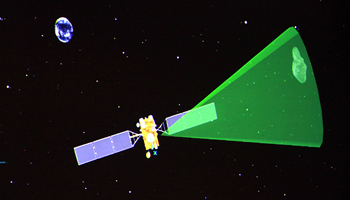Chinese Space Probe Flies by Asteroid Toutatis
Updatetime:2012-12-20From:
【Enlarge】【Reduce】
China's space probe Chang'e-2 has successfully conducted a maneuver in which it flew by the asteroid Toutatis, about seven million km away from the Earth.
Travelling in deep space, Chang'e-2 made the flyby on Dec. 13 at 16:30:09 Beijing Time (08:30"09 GMT), the State Administration of Science, Technology and Industry for National Defense (SASTIND) announced on Saturday.
The flyby was the first time an unmanned spacecraft launched from Earth has taken such a close viewing of the asteroid, named after a Celtic god.
It also made China the fourth country after the United States, the European Union and Japan to be able to examine an asteroid by spacecraft.
Chang'e-2 came as close as 3.2 km from Toutatis and took pictures of the asteroid at a relative velocity of 10.73 km per second, the SASTIND said in a statement.
Sources with the administration told Xinhua that Chang'e-2 is continuing its deep space travel and will reach a distance of more than 10 million km away from Earth in January next year.
Chang'e-2 was launched on Oct. 1, 2010 from Xichang Satellite Launch Center and later orbited the moon to finish a more extensive probe than its predecessor Chang'e-1.
Chang'e-2 left its lunar orbit for an extended mission to the Earth-Sun L2 Lagrangian point on June 9, 2011, after finishing its lunar objectives, which collected data for a complete lunar map.
The probe departed from L2 this year and began its mission to Toutatis.
Since its blast-off, Chang'e 2 has scored several records: being the first to capture full coverage map of the moon with a resolution of seven meters; being the first object ever to reach the L2 point directly from lunar orbit; and being the first to closely observe the asteroid Toutatis.
China early this year published a full coverage map of the moon, as well as several high-resolution images of the celestial body, captured by Chang'e-2. The resolution of the images is 17 times greater than those taken by Chang'e-1.
"The success of the extended missions also embodies that China now possesses spacecraft capable of interplanetary flight," said Wu Weiren, chief designer of China's lunar probe program.
Chang'e-2's extended missions, which were conducted millions of km away from Earth, have tested China's spacecraft tracking and control network, including two newly built measuring and control stations in the northwest Xinjiang Uygur Autonomous Region and northeast Heilongjiang province, according to the SASTIND.
However, China still belongs to the second tier in lunar probe internationally, said Ouyang Ziyuan, chief scientist for China's lunar orbiter project, adding that the Unites States and Russia are still leading nations in this field.
Wu Weiren stressed international cooperation in lunar probe, saying it is a shared responsibility of world scientists to work together in lunar and deep space exploration for the common good of the human race.
(Source: Xinhua)
Appendix




